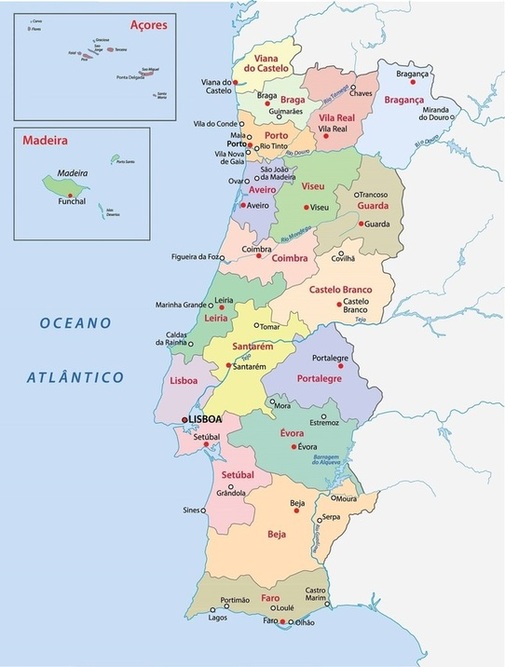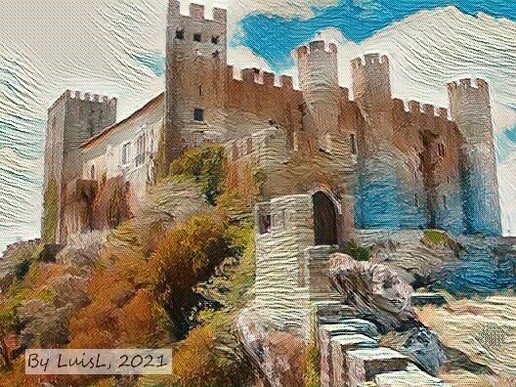
Location - District: Leiria; Municipality: Óbidos
Status: Classified as National Monument since 1910
Time of existence of the castle

The Ancient Roman City of Eburobrittium
Less than two kilometres walking from the current location of the Óbidos Castle it is possible to visit what remains and was discovered of the ancient Roman city of Eburobrittium.
Although the Roman Plínio-o-Velho (23-79 AD) already placed it between Collipo (Leiria) and Olisipo (Lisbon) - a geographical vagueness nurtured its location for centuries.
However, rather than intensive and systematic research, it was the construction of the IP6 and IC1 in the 1990s that uncovered the first traces of the city.
In the light of the data collected so far, it can be said that the "Roman City of Eburobrittium" survived between the end of the 1st century BC and the second half of the 5th century AD, in an area particularly favourable to the long stay of human communities.
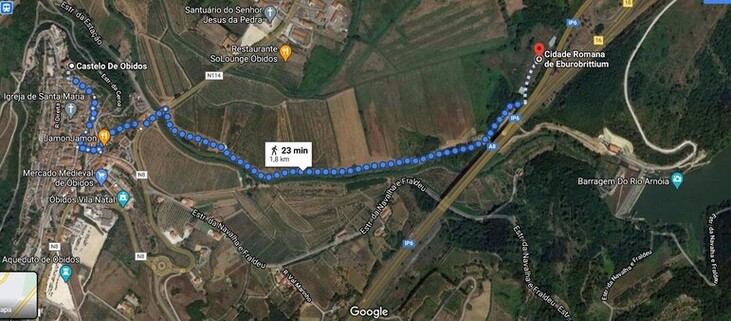
It is likely that its abandonment stemmed from the absence of a defense system, absolutely essential in the politically troubled period of the decline of the Western Roman Empire.
This abandonment may correspond to the beginning of the occupation of the site where the village of Óbidos and its surroundings are located today. CastleIt was easier to defend a settlement situated on this higher point, and the geographical characteristics with some cliffs and steep slopes provided a natural protection and defence.
Brief historical summary
It is believed that the earliest human occupation of the site dates back to a Romanised hillfort. With the decline of the Western Roman Empire, it was successively occupied by Visigoths (5th to 6th centuries AD) and Muslims (8th to 12th centuries AD), the latter being attributed the initial fortification of the settlement, as can be seen by the observation of certain sections of the wall with Muslim features.
Despite the interest of historians and the extensive documentary research carried out, at least since the second half of the 19th century, it has not yet been possible, however, to prove the existence, during the period prior to the so-called Christian Reconquest, of any population aggregate on the site where the Óbidos Castle.
The Óbidos castle is one of the most important examples of medieval fortification in the country. It stands on a small hill, at an altitude of around eighty metres, overlooking the surrounding plain and the River Arnoia to the east.
The Medieval Castle
In the context of the Christian Reconquest of the Iberian Peninsula, the forces of King Afonso Henriques (1112-85), after the conquests of Santarém and Lisbon (in 1147), encountered resistance to conquer the town of Óbidos and its castle, which finally took place in 1148. The castle has been documented since 1153.
The son and successor of D. Afonso Henriques - D. Afonso II (1211-23) - donated the town and castle to his wife, D. Urraca.
The town and castle remained loyal to D. Sancho II (1223-48) during the crisis that led to his deposition. In 1246, they resisted the assaults of the forces of the Count of Bologna, future king D. Afonso III (1248-1279).
This resistance earned the town the honorable epithet of "mui nobre e sempre leal" (very noble and always loyal), which still appears on its coat of arms.
Given as a wedding gift by D. Dinis (1279-1325) to the future queen Santa Isabel (D. Isabel of Aragon) during their nuptials there, the town became part of the dowry of all queens of Portugal, until 1834.
In the context of the Peninsular War, it was from the fortification of Óbidos that the first artillery shots were fired by the French on the English, which resulted in the Battle of Roliça (1808), in what was the first defeat of Napoleon's troops.
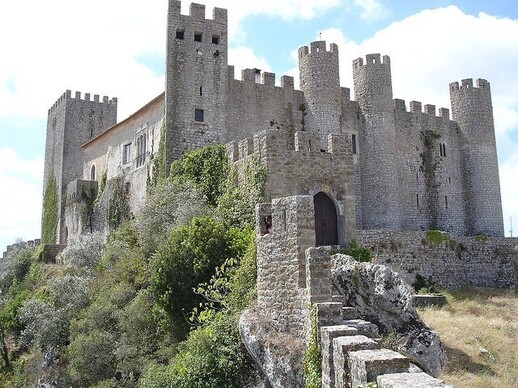
The medieval castle and military architecture
Resulting from several architectural interventions throughout the centuries, the castle Óbidos castle
It is said in military architecture that all elements have a purpose in the construction of a defence: whether in the face of a threat of war or as a result of the ambition of those who decide and finance this construction.
Ingenuity and expertise are required from those who design and implement these solutions, as they have to be adjusted to the spaces and geography where they are to function.
In this sense, each castle always has a characteristic that makes it unique, whether due to the geographical characteristics of its implementation or the type of threat it has to face.
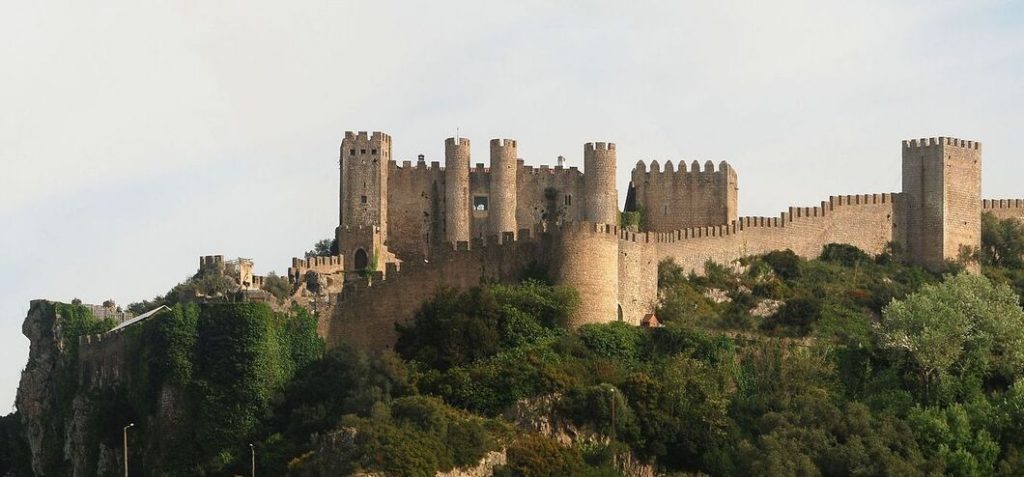
In this context, Óbidos and its castle are a paradigmatic example of the evolution of military architecture in Portugal.
The construction of the castle and the extension of its walled enclosures gradually developed from a probable surveillance point along the coast, in a process that was long, costly and a reaction to threats, and where much knowledge and culture crossed paths.
castle we should bear in mind that this is not a work carried out in a single contract by order of a king, but rather a continuous, centuries-long project, where castle and fence have been embracing the town.
During the reign of King Manuel I, improvements were made to the fortress and a palace was built, but the 1755 earthquake caused serious damage to the entire structure of the walled perimeter of the town of Óbidos.
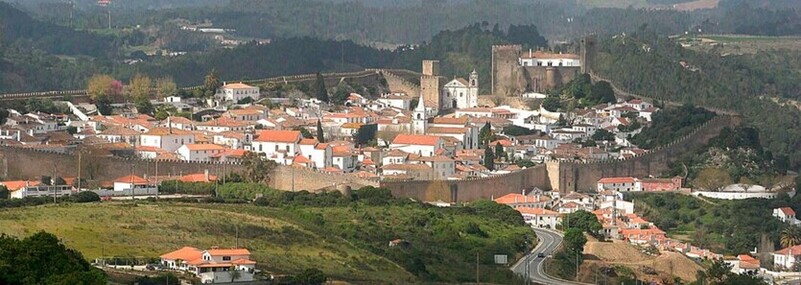
During the last century, starting in 1932, the castle underwent the first consolidation, reconstruction and restoration works carried out by the Direcção Geral dos Edifícios e Monumentos Nacionais (DGEMN). These works were resumed after the end of World War II, starting in 1947/48, when the State, through DGEMN, decided to undertake new restoration works on Óbidos castle.
Óbidos Castle The Pousada de Óbidos is considered the first state-run Pousada in a historical building: the Pousada Josefa d'Óbidos.
The Pousada de Óbidos is currently part of the Pousadas de Portugal, a group of historical hotels in some of the most beautiful palaces, monasteries and castles in Portugal.
The Óbidos Castle and all the surrounding area was elected in 2007 as one of the Seven Wonders of Portugal.
Links:
Óbidos Castle
Óbidos' Tourism - The Castle
Cultural Heritage - The Castle of Óbidos
City Hall of Óbidos - The Cultural Heritage
Roman City of Eburobrittium
City Council of Óbidos - Roman City of Eburobrittium
Cultural Heritage - Roman City of Eburobrittium
Inn of Portugal
Pousada of Portugal, Óbidos
Like it? Then share it!

